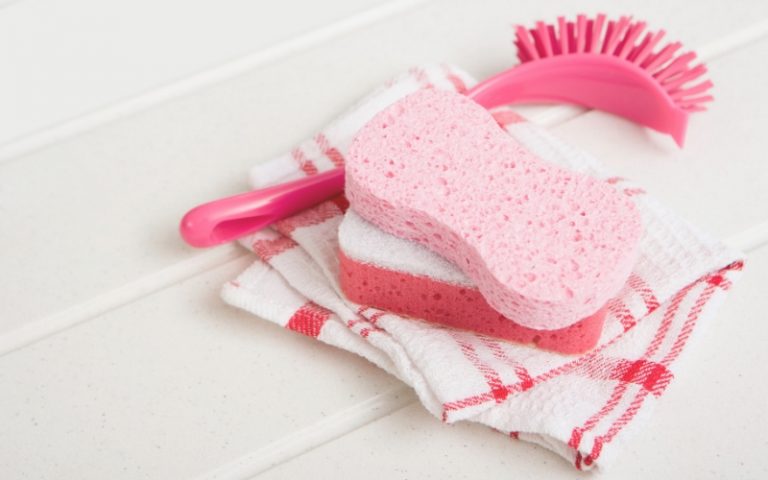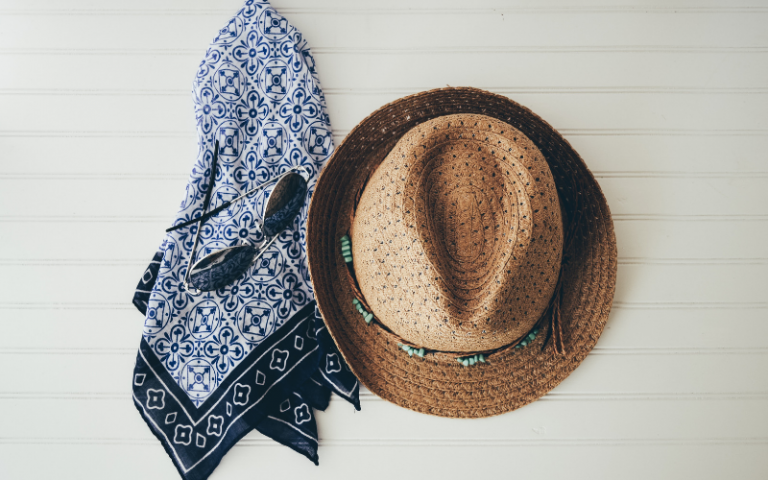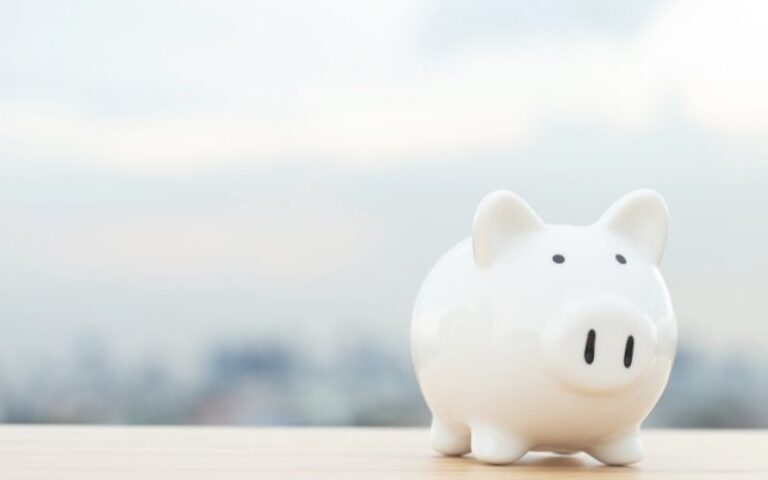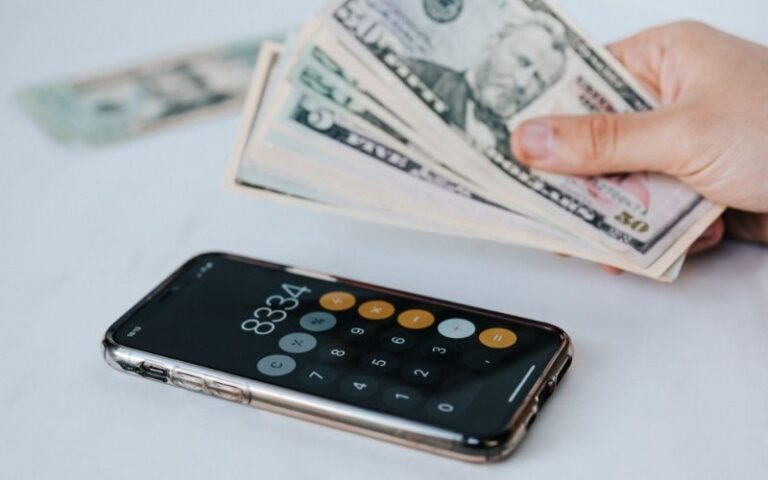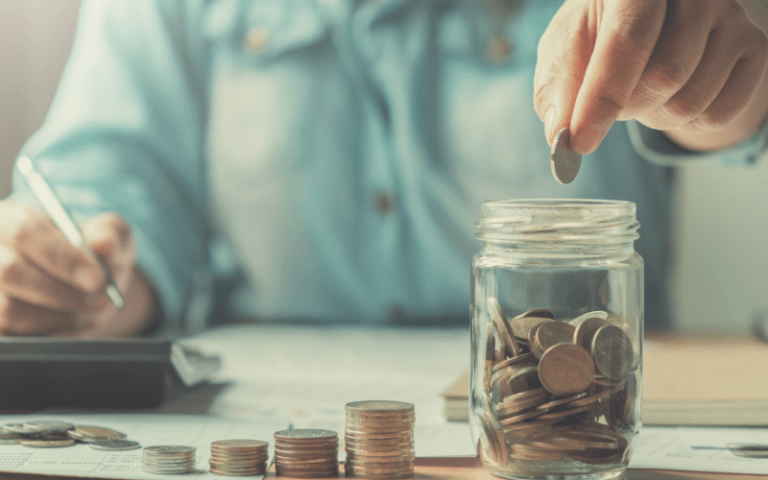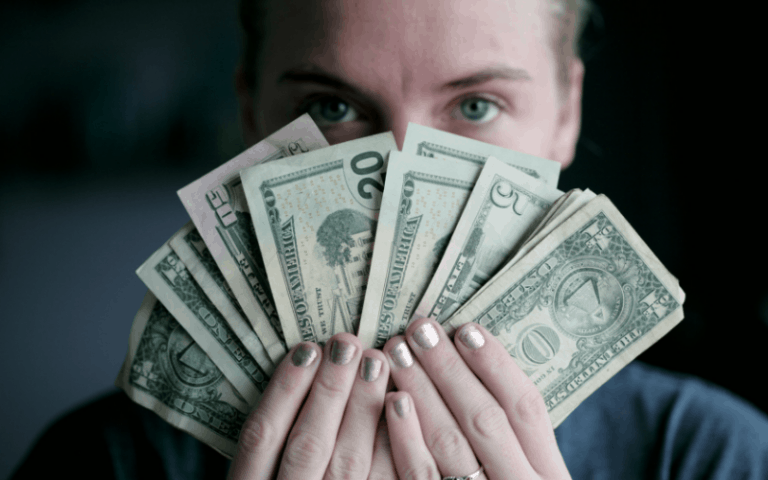How to Start Using the Cash Envelope Method. It’s Easy!
The Cash Envelope System is an easy budgeting technique that helps people save money, be more conscious of their spending habits, and take control of their monthly budget.
Do you need a simple way to keep your spending in check? Have you been meaning to create a budget but don’t know where to start? If so, the cash envelope method is for you.
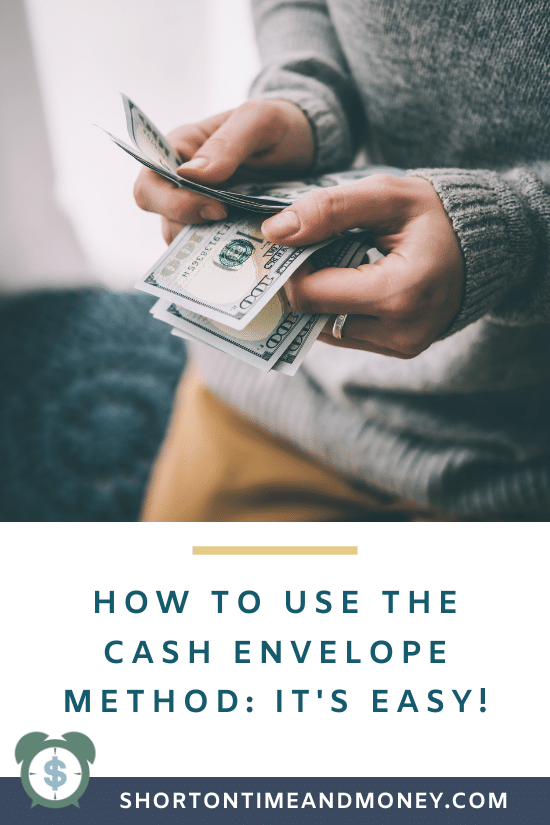
This system is incredibly easy and can be done with minimal effort. You’ll find that it’s much easier than creating spreadsheets or trying to figure out how much money you have left at the end of each month. The cash envelope method teaches people how to spend less by keeping track of their cash flow and using physical envelopes as a symbolic reminder of what they are currently spending on certain things.
The cash envelope method (also known as the envelope budgeting method) is a budgeting technique that allows people to track their spending in an easy manner. It was first created by Dave Ramsey and has been proven effective for many people. The system is simple, but it does require some commitment on the user’s part.
The way the cash envelope system works is you divide your money into different envelopes labeled with various categories of spending (restaurants, clothing, etc.). Each time you spend money from one of these envelopes, you record what the purchase was and how much it cost. Then, at the end of each week or month, you can tally up how much money from which envelope went towards what category to determine if your expenses were in line with your spending goals.
So let’s talk about how to use the cash envelope method.
I recently started using the cash envelope system and I’m loving how much more in control of my finances I feel. This simple system is a good idea for anyone who wants to get control of their budget.
What is the Cash Envelope System?
The cash envelope system is a budgeting technique that involves putting your monthly income in envelopes designated for various expenses such as groceries, entertainment, clothing etc. When you go shopping or make a purchase, you take money from the corresponding cash envelope for that category.
Why You Need the Cash Envelope Method
So let’s talk about why you need the cash envelope method. I think the main thing about this system is that it’s visual. People are funny. Studies have found that spending cash has a different psychological effect on us than swiping a credit card or debit card.
It’s also easy to keep track of your purchases with this system, which is great for people who want to track their spending.
But perhaps the best reason you need this method? It helps curb impulse buying because it forces you to use cash and limits how much you will allow yourself to spend in a given month.
Impulsive buys can kill your budget. Seeing the cash in hand can be super helpful!
Plus, instead of having numbers on a screen (your phone or the computer), you have those real numbers written down in front of you. And you have that physical cash in your hand. Your budget suddenly becomes real and tangible and that’s important if you are trying to get a handle on your spending habits.
How to Get Started with Your Cash Envelopes
Every day, we are faced with the decision to spend or save money. It can be hard to keep track of how much you’re spending on specific things and where your money is going unless you have a plan of action. The cash envelope system helps you stay aware of what’s really happening in your financial life.
The way the cash envelope system works is, you divide your money into different categories and use those envelopes for specific expenses. These categories can be anything you want them to be, but they should reflect the spending habits of your household so that it’s easy to keep track of where your money is going.
Each time you spend cash from an envelope, take the receipt and put it in the appropriate envelope. Or you can write the amount you spend with the remaining balance on the envelope so you have a visual record of your spending.
For example, I have an envelope labeled ‘groceries’ where I put all my cash for groceries. I also add the shopping receipts from a given month in the envelope so I can see how much money I typically spend in a month on groceries. At the end of each day I make a written record of what I spent money on, which category it came from, and how much money I have left in each category.
If I want an ice cream cone when I’m out shopping but I’ve spent my allotted cash for the month already, I’ll have to wait until the next month.
This is a great way for me to save money and not overspend on things. It’s the act of taking out that cash and handing it over that makes it feel more real and tangible.
Once you have spent all the money in a particular category envelope, it’s time to take a look at your spending habits. I typically do a review of my spending at the end of each month.
If there is still cash available in an envelope at the end of the month you can either roll over that money to the next month or choose to put the extra cash into savings or toward debt.
My favorite part about using the cash envelope system is that I can spend as much or as little money on each category within my budget. I don’t have to feel guilty about what I spend money on and I get to see how my money is working for me.
That’s the beauty of the cash envelope method. You get to decide and make adjustments accordingly. And not only that, but it puts you in control over your spending.
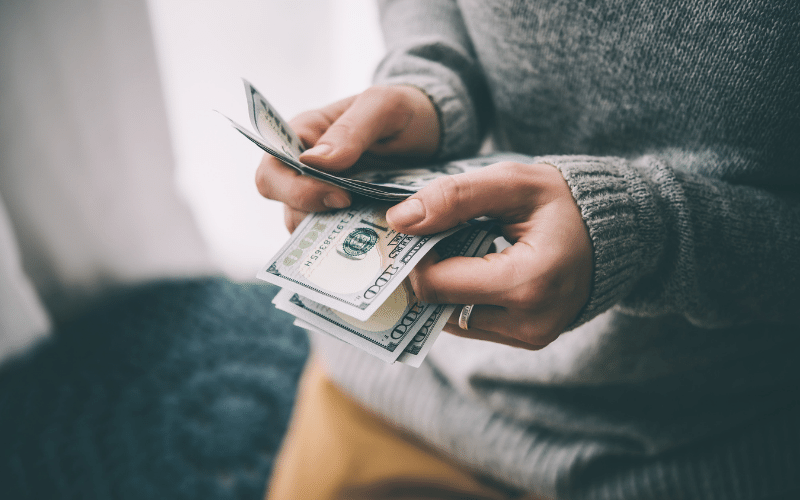
What Are the Benefits of the Cash Envelope Method?
There are several great benefits to using the cash envelope method:
#1 Not only does it help you to save money, but there is also a sense of freedom and control over your spending that comes with this budget system.
#2 There’s also no need to worry about not having enough money in your bank account when you go to make a purchase because you’ve already taken the money out and you have it in hand.
#3 You get to decide how much goes where within your allotted categories.
Tracking Your Spending
Tracking your spending can be a real eye-opening experience! If you’ve never tracked your spending, this is a must-do step for using the cash envelope system.
Really, the first step in getting started with the cash envelope method is to track your spending.
What does it mean to track your spending? It means that you have to list out all the things you spend money on for an entire month. This includes everything from your rent or mortgage payment, grocery shopping, and household items like paper towels and toiletries.
The second step is to divide your spending up into the different categories it falls under (i.e., education, housing, car, entertainment, etc.) Your categories might look different than mine, but what’s important is that you choose categories that fit your lifestyle.
The third step is to take your cash and divide it up into the different envelopes. Some folks call this stuffing your envelopes and I can tell you that once you get started making this a habit, you’ll get hooked on it! It’s very empowering to see your money working for you and knowing you have control over where your money goes.
The final step is to put all of your spending in the appropriate place, so you know exactly what’s going on with each category. You will be able to see if a particular budget envelope is being overspent or underspent, which helps make adjustments as needed for the next month.
When I first started using the cash envelope method, it forced me to really think about my spending. I was so used to swiping my debit card that I have never given much thought to how I spent money – not to mention my financial goals!
Variable Expenses vs. Fixed Expenses
A Fixed expense is an item that you have to pay every month, regardless of how much money you make – such as a car payment, cell phone bill, or rent. These monthly expenses probably won’t change very often. Variable expenses are the costs that you can spend more or less in each month- these include things like groceries and gas.
In fact, your grocery budget may be one of the best areas of your budget where you can save money. Tracking your spending is so helpful for this!
It’s important to know which category an expense falls into when creating a cash envelope budget because they require different strategies for planning.
What if you don’t have enough money for your bills?
Sometimes life doesn’t go as planned and you may have a hard time paying all your bills. If there are months where you have too many variable expenses and not enough money for your fixed ones, it’s time to set up a plan.
This is why having an emergency fund is so important. If don’t already have money saved in an emergency fund , it’s time to start.
You may need an emergency fund if you have a car break down, lose your job or get sick and can’t work for some time- just so that those unexpected expenses don’t send you into bankruptcy. You should consider contributing money weekly or monthly towards the goal of building up your emergency fund over a period of months until you have enough money to get you through any unexpected things that may happen in the future.
Choosing Your Spending Categories
After you’ve tracked your spending and you know where you’re putting your money, it’s time to choose your budget categories. These categories will depend on what you need/want to save for.
If your goal is to reach a certain savings balance, then the best spending category would be “Savings.”
If your goal is to pay off your credit card debt and have no monthly payments, then the best spending category would be “Debt Payments.”
You’ll need a number of different spending categories for each month and these can differ from household to household, but many families have similar categories of spending.
Here is a list of some possible spending categories:
- Savings
- Debt Payments
- Utilities (electricity, gas)
- Mortgage/rent payments (or rent+utility combined if you don’t have a mortgage)
- Groceries
- Household (shampoo, toilet paper, etc.)
- Health and Beauty
- Pets
- Personal
- Car Maintenance / Gasoline
- Fun Money / Entertainment
- Clothing
- Sinking Funds (Christmas, birthdays, vacations, etc.)
You don’t want to have too many categories but you don’t want to have too few either.
Decide how much cash to stuff in each envelope based on your spending habits and what you learned when tracking your spending.
Decide when you want to pull out cash from your bank account
Some people like to pull out money from their bank account on a weekly basis and others prefer monthly. I like to do this once a month at the beginning of the month. If you get paid more than once a month, you may want to stuff your envelopes weekly or bi-weekly on your next paycheck.
No matter what, decide when you want to do it so that your cash envelope system will work for you.
The most important thing is that once the time comes around (weekly or monthly), make sure not to spend any of your budgeted amounts until you’ve sat down and looked at your budget.
Also, remember, you should always make sure you have enough cash in bank account(s) before transferring any money over into envelopes, to pay your bills that won’t be paid in cash.
How to Stuff Your Cash Envelopes
Once you’ve decided how much cash you want to put into each category, you’ll go to the bank and withdraw the total amount.
You may want to ask for different denominations of cash so it’s easier to put the exact amount of cash into each envelope. You can give the bank teller a teller slip of paper that says “please give me $100 in fifties, $200 in twenties, and $50 in tens” and they’ll know what you’re asking for.
If you’re requesting a lot of cash from the bank teller, having a teller slip can be very helpful.
Or, you can print out my free printable teller slips at the end of this post that make it super easy to tell your bank teller exactly how many bills and in what denominations you need.
When you get home from the bank with your cash, you’ll need to spend some time filling up your separate envelopes.
Each envelope should have enough space for the bills and a little bit of extra room because it’s easier to put in more cash if there is any leftover than not having enough cash. Some people prefer using ziplock bags or cloth envelopes, but I like being able to print my own each month. You could even use plain white mailing envelopes. Whatever works for you!
Create Spending Limits
The first thing you need to do is to figure out your spending limit for each category. This will be different from person to person, so start by asking yourself the following question: How much do I need this month?
This is where tracking your spending comes in handy. Create your spending limits for each category based on what you’ve spent in the past and use that to set your limits.
A few questions to ask yourself when figuring out spending limits are:
- How much do I need for gas in a month?
- What about groceries?
- Do I want to allot money for going out with friends or entertainment as well?
By setting realistic spending limits , you’ll be able to save more money and have less of a chance for overspending.
How to Make Your Cash Envelopes
I like to print out fun cash envelopes at the beginning of each month.
The instructions are pretty easy. You just need to download the files and print them out on any type of paper (I recommend cardstock or kraft paper). Then, cut along all the lines with scissors. Fold the envelope along the fold lines and then glue or tape the envelope together. Then, write the name of the envelope on both sides and decorate it however you want.
Printing cash envelopes can be a fun way to get you excited about budgeting and saving money.
Taking Money from Other Category Envelopes
It’s important to create a realistic budget and if you find yourself needing to take money from one category to use in another category, you can do that but you may need to re-evaluate your budgeted amounts (or your spending habits) if you find yourself doing this repeatedly.
Setting Cash Goals
I like challenging myself not to spend all of the money in my cash envelopes. This isn’t always possible, but when it happens it feels good! Then, I can put the leftover cash toward different savings goals like a sinking fund or savings account or even debt.
Having cash savings goals is a good way to motivate yourself and it’s a great idea if you have debt because the cash envelope system can help prevent overspending.
To set up the cash envelope system, you should divide your money into envelopes labeled with various categories of cash spending. For example: one for “groceries” and another labeled “entertainment.”
Depending on the type of cash envelopes you use, you may want to write each transaction down on the envelope or on a cash register card.
You can also use a small notebook to keep track of transactions in each budget category by writing down what purchase was made, what it cost, where it took place, and on which day or month.
At the end of each month (depending on how often you think is best), you’ll determine if your expenses are within budgeted limits or not. If your cash spending was over-budget, adjust accordingly so next time around things will be more accurate!
What to do at the end of the month with your cash envelopes?
At the end of the month you should have a monthly expense for each of your cash envelopes.
You should also have leftover cash that you can put toward different savings goals like sinking fund, debt or even retirement accounts.
It’s important to take stock of where your money went and add up how much you spent in each category at the end of the month. This way you can see where you may have bad habits in your spending or holes in your budget.
Knowing where you wasting money is the first step to saving it.
Frequently Asked Questions
What is the best thing about the envelope method?
It’s one of the easiest ways to budget.
What is a good time period for using this system?
One month, three months or six months are all reasonable periods.
How does it work?
Each envelope has only enough money in it for one expense category (e.g., grocery envelope). A person puts cash into envelopes to set limits on their spending each month.
How much money should be in each envelope?
It’s up to you. You can set your envelopes with different amounts of cash or the same amount, whatever works best for you and your household budget.
What happens if I spend more than what is in an envelope at one time?
When there isn’t enough money left you can either pull out money from another envelope or borrow from the next month which is an important skill for avoiding debt.
What are some advantages of this system?
It’s a strategy to help you avoid overspending. It can be used with any type of budget, including one that changes each month or even each week.
How do you use cash envelopes without cash?
You can use any type of money for your envelopes, including gift cards. For example, you could put a $100 Starbucks card in an envelope and that would be the limit to how much coffee you buy at one time.
How do I use the cash envelope method for online purchases?
You can set a limit for each category to use with your debit card just like you would with cash. Then, just keep a written record (like a checkbook register for each category) of everything transaction you make. Make note of your totals in each category at the end of each day so you know how much money you have left in that category.
You might want to have a separate offline account for online spending but it’s not always necessary since many banks do this automatically.
What should I do with extra money in my envelopes?
The leftover money in the envelopes can be rolled over into your other envelopes for the next money, such as putting an extra $100 from one envelope to another. Or you can choose to keep the leftover cash in it’s envelope so your budget for that category increases the following month.
You could also choose to put the leftover money into your saving account or into a sinking fund.
How do I start using cash envelopes?
You can either go online and order some physical ones or make them yourself by cutting out a sheet of paper for each envelope category you plan on having.
In Conclusion
The cash envelope method is a great way to keep track of where your money is going, and it’s also very easy to set up. By using the cash envelope method you’ll get your spending under control and be able to put your money where it’s needed instead of just letting it go.

